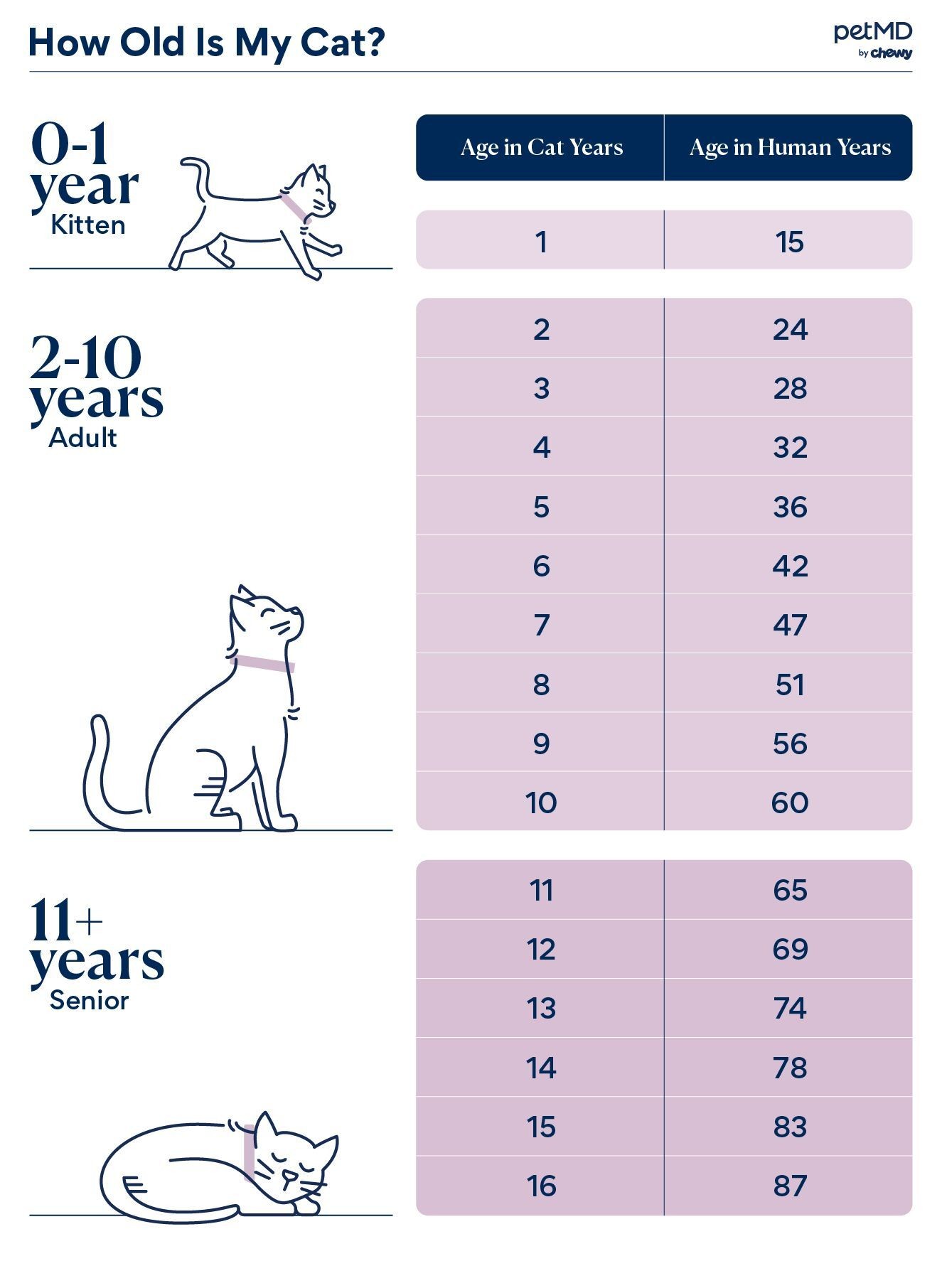Cat lovers adore celebrating their feline friends’ birthdays, recognizing them as cherished members of the family. However, the way cats age differs significantly from humans, especially throughout their lives. Understanding how cat years translate to human years is crucial for providing the best possible care for your furry companion.
“Converting cat years to human years helps us truly understand our cat’s aging journey in relation to our own,” explains Dr. Mary Gardner, a Doctor of Veterinary Medicine and co-founder of Lap of Love Veterinary Hospice. “Just as senior humans may face mobility challenges, a cat aged 11 or older, which is equivalent to about 60 human years, might experience similar age-related difficulties.”
So, how exactly do you figure out your cat’s age in human terms? It’s not as simple as multiplying by seven. Let’s delve into the science behind cat years and how to accurately estimate your cat’s age.
Key Facts About Cat Aging:
- In their first year, cats age rapidly, reaching the equivalent of 15 human years.
- Breed differences have minimal impact on a cat’s aging rate.
- Veterinarians have several methods to estimate a cat’s age if their birthdate is unknown, focusing on health indicators.
Decoding Cat Years: More Than Just Multiplication
The common myth that one cat year equals seven human years is an oversimplification. The American Veterinary Medical Association (AVMA) clarifies that cat aging is much more nuanced.
During their first year, cats develop at an accelerated pace, reaching roughly 15 human years. By their second year, this increases to approximately 24 human years. After the age of two, the aging process slows down, with each subsequent cat year equating to about four human years.
Regardless of breed, cats generally age at a comparable rate, making these guidelines broadly applicable.
Cat Age Chart: Converting Cat Years to Human Years
To easily determine your cat’s age in human years, refer to the chart below:
 A infographic chart detailing the age conversion of a cat
A infographic chart detailing the age conversion of a cat
An infographic chart illustrating the conversion of cat years to human years, showing the non-linear progression and equivalent human ages.
Determining Your Cat’s Age When Unknown
If you’ve adopted a cat without knowing their exact birthdate, you might celebrate a “gotcha day” instead. However, knowing your cat’s approximate age is vital for ensuring they receive appropriate care tailored to their life stage. Veterinarians have several reliable methods to estimate a cat’s age when their history is unknown.
Veterinarians may assess various factors to estimate a cat’s age, including:
- Teeth: Dental examination is a primary indicator. Younger cats have clean, white teeth, while older cats may exhibit tartar buildup and wear.
- Eyes: The lens of a cat’s eye changes with age. Younger cats typically have bright, clear eyes, while older cats may develop cloudiness.
- Coat: A kitten and young cat have a soft, fine coat. As cats age, their fur can become thicker, coarser, and may include gray or white hairs.
- Muscle Tone and Body Condition: Younger cats are generally more muscular and active. Older cats might have some muscle loss and decreased activity levels.
Why Knowing Cat Years Matters for Lifelong Care
Thanks to advancements in veterinary medicine, better nutrition, and the deepening bond between humans and their cats, felines are living longer, healthier lives than ever before.
Dr. Gardner notes, “The average cat lifespan is around 12 to 15 years. Purebred cats tend to live about 12.5 years, while mixed-breed cats often live a bit longer, averaging around 14 years.”
Understanding your cat’s age in human years empowers you to provide them with optimal care at every stage of their life. Whether it’s kittenhood, adulthood, or their senior years, age-appropriate care ensures your feline companion enjoys a happy and healthy life by your side.
Featured Image: iStock/Drazen_

